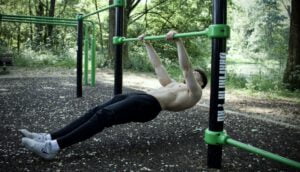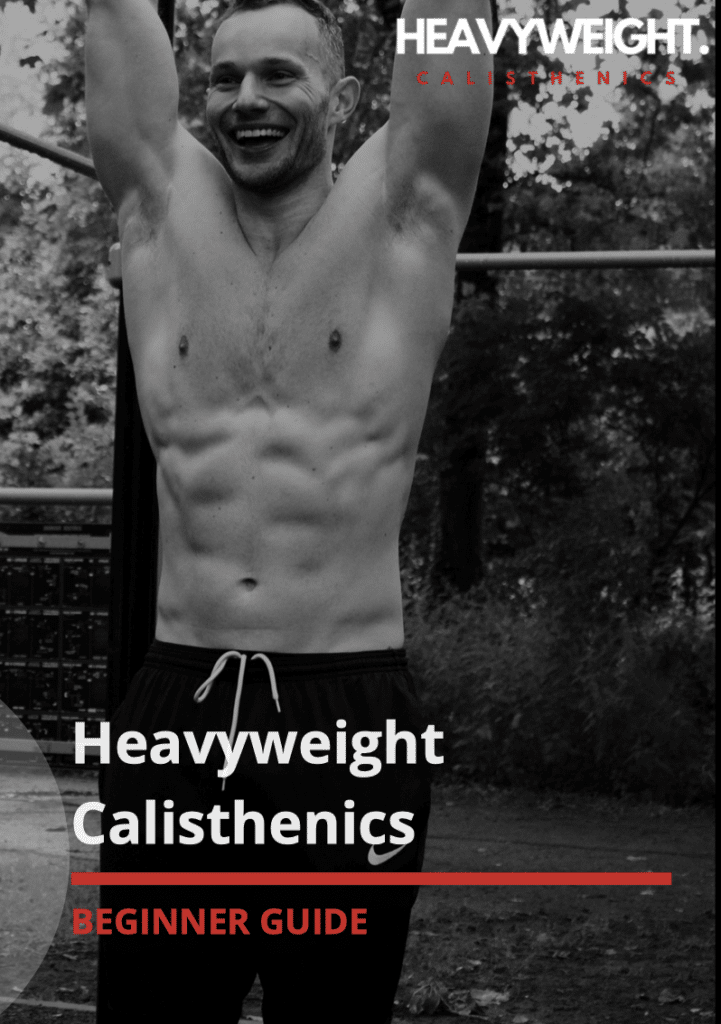Parallel bar dips aren’t just a popular calisthenics exercise; they’re a powerhouse for building strength and muscle mass. As one of the essential five calisthenics moves, the bodyweight dip holds a special place in any calisthenics training routine.
This article serves as your comprehensive guide to mastering the bodyweight dip. From proper form to advanced variations, we’ve got you covered. Discover the nuances of this effective exercise and learn how to integrate it seamlessly into your workout regimen.
For those enthusiasts looking to elevate their dip game further by incorporating additional resistance, delve into my blog dedicated to the weighted dip. Uncover tips, techniques, and the added benefits of taking your dips to new heights with the challenge of added weight.
Navigeer
What are dips?
The dip is a compound bodyweight strength exercise that can be performed both on rings and parallel bars. There are various variations of the dip, including the chest dip, tricep dip, and the relatively new calisthenics/street lifting dip.
Chest dips / tricep dips
In traditional fitness discussions, two variants of the dip are often emphasized: the tricep dip and the chest dip. As the names suggest, these variations specifically target the triceps or the chest.
During a tricep dip, the emphasis is on maximizing triceps engagement by descending as vertically as possible.
If you’re looking to target your chest muscles, a simple forward lean accomplishes this effectively. This positioning creates a greater stretch on your chest muscles.
In both types of parallel bar dips, maintain a retracted and depressed position of your shoulder blades. This enables you to benefit from a full range of motion, optimizing the effectiveness of the exercise.
Calisthenics / street lifting parallel bar dips
Within the calisthenics community, an evolving trend in dip execution is gaining traction among athletes, diverging from the conventional chest and tricep dips described earlier.
In this innovative dip technique, your shoulder blades assume a protracted and depressed position.
The protracted shoulder blades deliberately reduce the range of motion, making it easier to handle heavier weights while simultaneously minimizing the risk of injuries.
Moreover, this variant showcases significant overlap with other calisthenics exercises that involve a protracted scapula, such as the planche and the handstand pushup.
For a more in-depth exploration of the differences in technique, check out the video below on the nuances of street lifting/calisthenics dip form.
Parallel bar Dip competition requirements
Heb jij de ambitie om in de toekomst mee te doen aan calisthenics of street lifting wedstrijden? Dan is het goed om op de hoogte te zijn van de regels.
Zo moet je met je schouders onder de lijn van je ellebogen komen. Wat inhoudt dat je iets dieper dan 90 graden gaat. Ook moet minimaal je heup onder de dip bar komen. En dient de dip in één vloeiende beweging uitgevoerd te worden.
Execution of parallel bar dips
To perform the dip, you need two parallel bars, commonly available in most calisthenics parks or gyms. If you’re training at home, you can use two chairs or invest in a set of high parallettes.
#1 Startposition
- Grip width: Take the length of your forearm (with fingers extended) and add 5 cm for the perfect grip width.
- Grip: Hold the bar/dip station firmly with straight wrists.
- Elbows: Fully extended. Legs: Extended and pointing downward, do not cross!
- Abdominals: Engaged.
#2 Eccentric part (downwards)
- Forearms: remain straight as your shoulders move forward.
- Hips: in a posterior pelvic tilt.
- Depth: descend until your shoulders are just below the 90-degree angle.
- Legs: go straight down, prevent any swinging motion. Breath: exhale on the way up.
#3 Concentric part (upwards)
- Extend your elbows: by engaging your triceps and chest muscles.
- Abdominals: remain tightened.
- Breath: inhale and begin again.
Training towards the parallel bar dips
If you don’t have the strength to train dips yet, you have two options. You can either make dips easier by using a resistance band or perform an eccentric dip.
Parallel Bar Dips with resistance band
Your first option is to use resistance bands, also commonly known as resistance bands. This is the best option to make quick progress with your parallel bar dips.
In the example below, you can see how to use the band. The advantage of resistance bands is that they provide more support as you go further down (due to being stretched further). In the top position, you have minimal support, while in the bottom position, you have more.
Your goal is to perform 3 sets of 6 reps with a particular resistance band. When you achieve this, it’s time to switch to a thinner resistance band. Repeat this process until you no longer need a resistance band.
Excentrische dips
With eccentric parallel bar dips, you only perform the first half of the exercise. You begin in the starting position and lower yourself in a controlled manner over 3 to 5 seconds.
When you reach the bottom position, release the parallel bars. This counts as 1 rep. Perform 3-4 sets of 4-6 reps of this exercise, and you’ll quickly build the strength to transition to regular dips.
Ring dips
Once you’ve mastered this exercise on the parallel bars, it’s time for a new challenge. You can choose to train dips on the rings.
Performing ring dips is considerably more challenging than on the bars because you have to balance your own body.
In this case, your shoulder, abdominal, and arm muscles have to work much harder than on the bars, making it an excellent exercise for overall stability.
When performing dips on the rings, aim to keep the rings as narrow as possible so that you can keep them close to your body. The further the rings are from your body during the dip, the more challenging it is to stabilize yourself.
Especially if you’re aspiring to master the ring muscle up, it’s wise to become comfortable with ring dips first.







